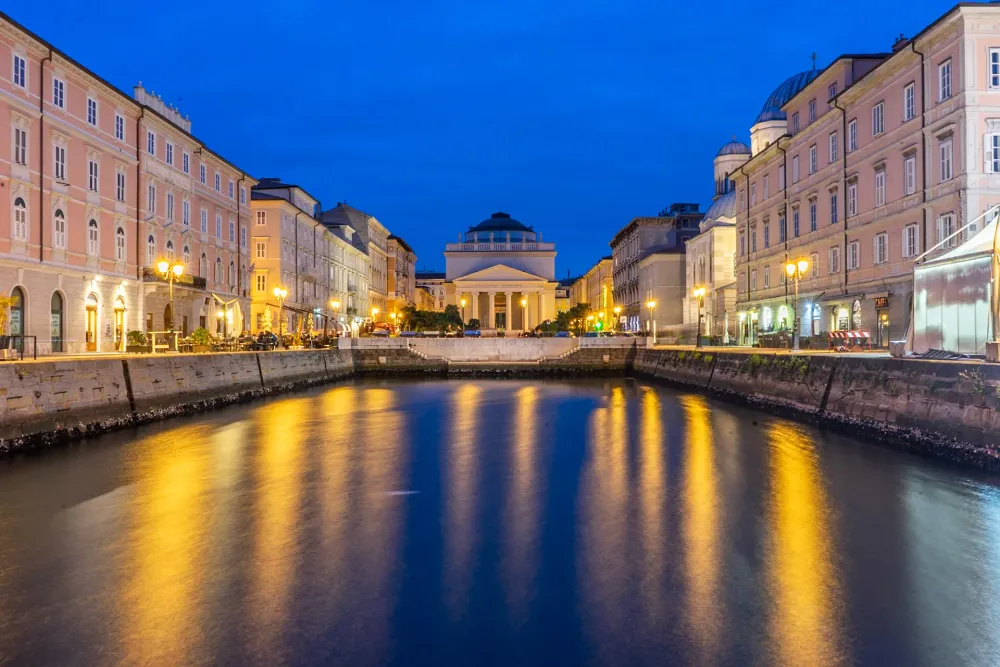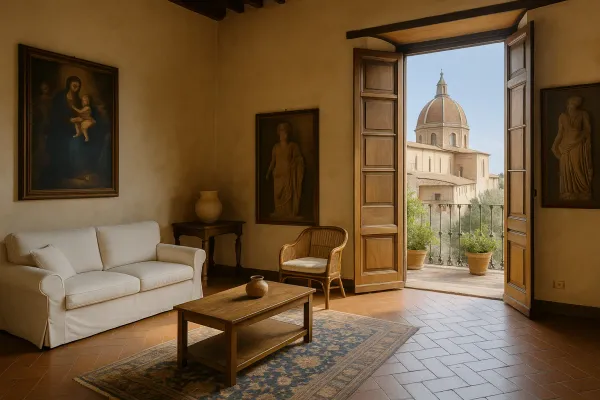The Forgotten Italian City on Its Way Back to Greatness
Standing atop Mount Giusto, surrounded by the remnants of the Roman Forum, overlooking the expansive harbor and the azure Adriatic Sea, it's easy to grasp why Trieste was once among the globe's premier ports. So, why has it now faded into obscurity?
For centuries, Trieste was illustrious, Europe's primary portal to the Mediterranean, and a notable destination. Yet, when I mention it back in Britain, I'm usually met with blank stares. "Trieste?" they ask. "Where is that?"
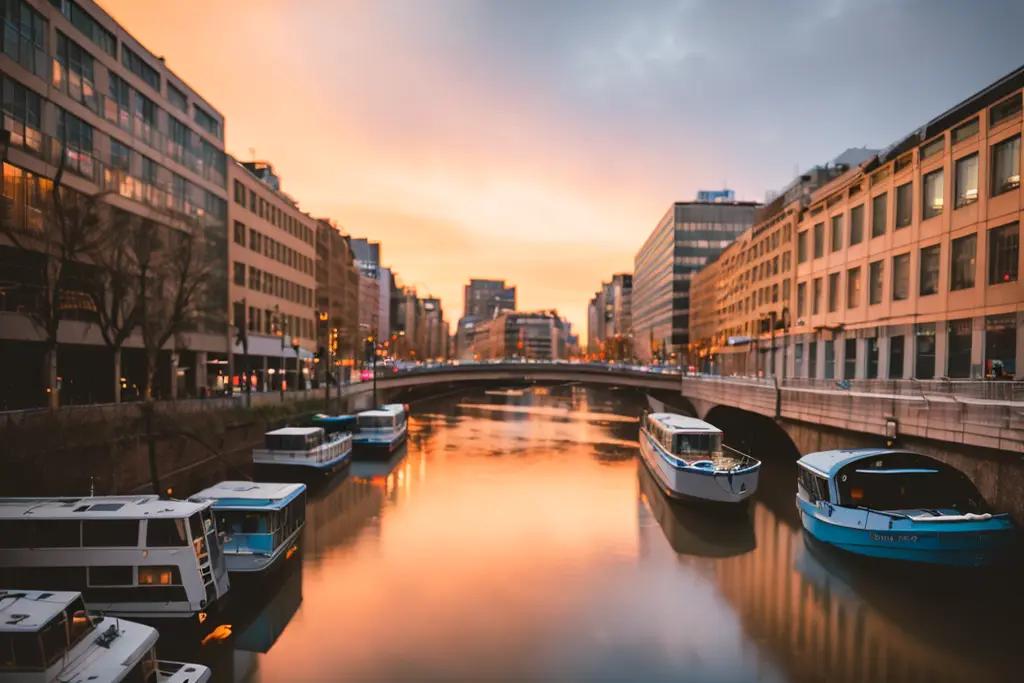
That perception seems poised to shift. The last time I visited, five years ago, Trieste appeared as a tranquil backwater. Large cruise ships diverted from Venice due to restrictions are now docking here instead. After decades in the shadows, this ancient, disputed city is back on the tourism map.
Large cruise ships diverted from Venice due to restrictions are now Trieste's descent into obscurity because it was on the losing side in both World Wars. Before the First World War, it was the sole seaport of the Austrian empire. When Austria lost, it became Italian, but Italy had little use for it.
At the close of the Second World War, it was occupied by Tito's communists, who wanted it as part of Yugoslavia. The Western Allies disagreed, so from 1945, it lingered in limbo, governed by the UK and the USA as they deliberated its fate.
Ultimately, in 1954, Trieste was returned to Italy, stripped of its Istrian hinterland, which became part of Yugoslavia. During the Cold War, it was a dead-end town, enclosed by the Iron Curtain. When I first passed through here 40 years ago, on my way to Yugoslavia, it seemed like a place whose time had passed.
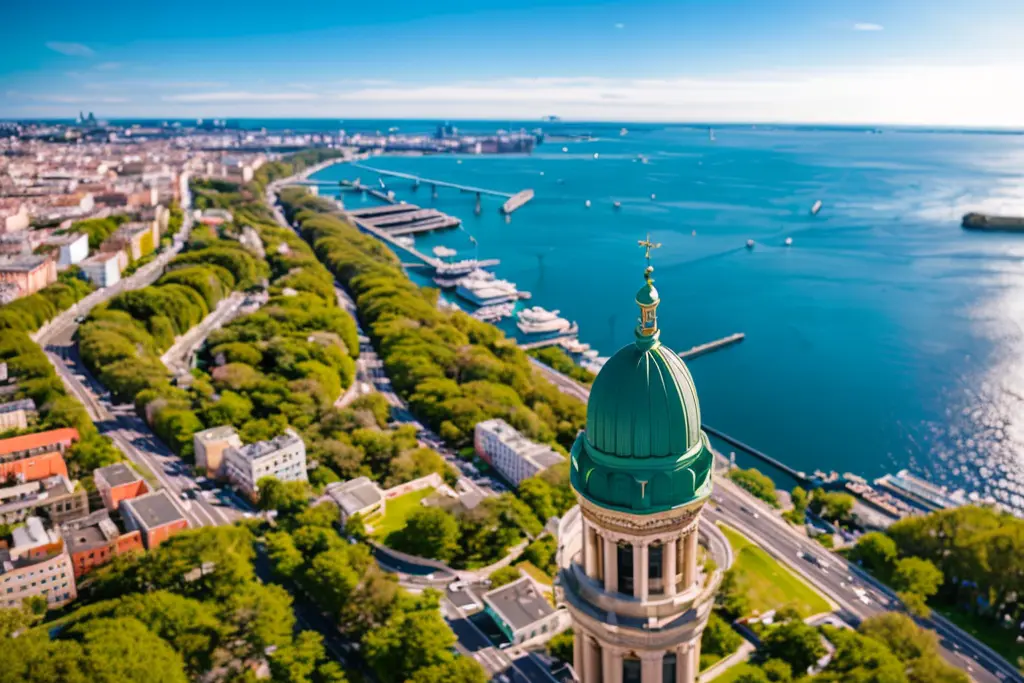
Much has changed. Yugoslavia is no more, and Trieste is a junction, not a dead-end. Its new neighbor, Slovenia, is in NATO and the EU. Its streets are bustling with sightseers, and the chatter in its bars and cafes is diverse, reminiscent of its Edwardian golden days when Britons traveled here by train to board steamers bound for the Far East.
Many modern travelers arrive on cruise ships, merely stopping for a brief exploration before moving on to another port. Yet, if you linger a bit longer, you'll discover another facet of Trieste – an enigmatic border town at the intersection of Latin, Germanic, and Slavonic cultures, still haunted by the ghosts of its Habsburg glory days, still distinct.
On my previous visit, I stayed at the Savoia Excelsior Palace – a grand hotel built just before the First World War. It’s historic and luxurious, in a prime position on the waterfront, but it felt more like a business hotel to me. This time, I wanted to unwind and explore the surrounding countryside, so I stayed at the Tivoli Portopiccolo, a coastal resort in Sistiana, 12 miles west of Trieste.

Portopiccolo is a modern development, nestled in a secluded cove with a sleek beach club and a marina full of stylish motor yachts. It reminded me of that popular TV show about an upscale resort. It's extremely comfortable and relaxing, but you feel somewhat isolated from real life. However, Sistiana is just around the corner, a practical harbor full of fishing boats and dinghies, with a stretch of pebble beach flanked by seaside shacks selling affordable food and drink.
The best way to approach the city is by boat, and during the summer there’s a ferry from Sistiana that takes you right into the heart of town. Tickets are affordable, and the journey is delightful. The surrounding coast is a long wall of limestone cliffs, thick with dark forest. It’s a dramatic sight, and the finest view is from the water. Eventually, the cliffs recede, and you sail into a broad bay, flanked by wharves and warehouses. Welcome to Trieste.
Over a century since the Austrians were driven out and the city became part of Italy, Trieste still feels more Central European than Italian. The cuisine is hearty, the architecture robust, and its cafes resemble those of Vienna. The locals are proud of their mixed heritage, and while Italian is the common language, everyone I spoke to emphasized their multicultural roots.
There is even some separatist sentiment. “Free Territory of Trieste,” proclaims a large banner on the Piazza della Borsa, one of Trieste’s busiest thoroughfares. “USA & UK come back!” I only met one outright separatist, far too young to remember when his hometown was administered by Americans and Brits, but nostalgic for that era nonetheless.
This regional identity adds another layer of interest to this elegant, intriguing city. It’s a metropolis in miniature – lively and attractive, yet small enough to navigate on foot (the population is about 200,000, around the same as it was a century ago when the Austrians left). From the narrow alleys of the old town to the broad boulevards of the city center, it’s a pleasant place to wander, full of street life and human interest.
Trieste has no standout sights and no must-see attractions. Its appeal is subtler, more discreet. The travel writer Jan Morris captured its cryptic aura in her melancholy memoir, "Trieste and the Meaning of Nowhere." James Joyce, who spent a decade here, cherished its understated charm.
The site that encapsulates Trieste’s moody ambiance is Miramare, a fairy-tale castle on a rocky promontory, battered by the restless sea. It was built by Maximilian, younger brother of the Austrian Emperor, Franz Joseph, but he barely spent a year here before being whisked away to become Emperor of Mexico. His quixotic empire was overthrown, and the republican rebels had him executed. Today, his forsaken folly is a museum, a monument to Habsburg hubris. It's believed to be bad luck to spend the night here. Several subsequent inhabitants also met untimely ends.
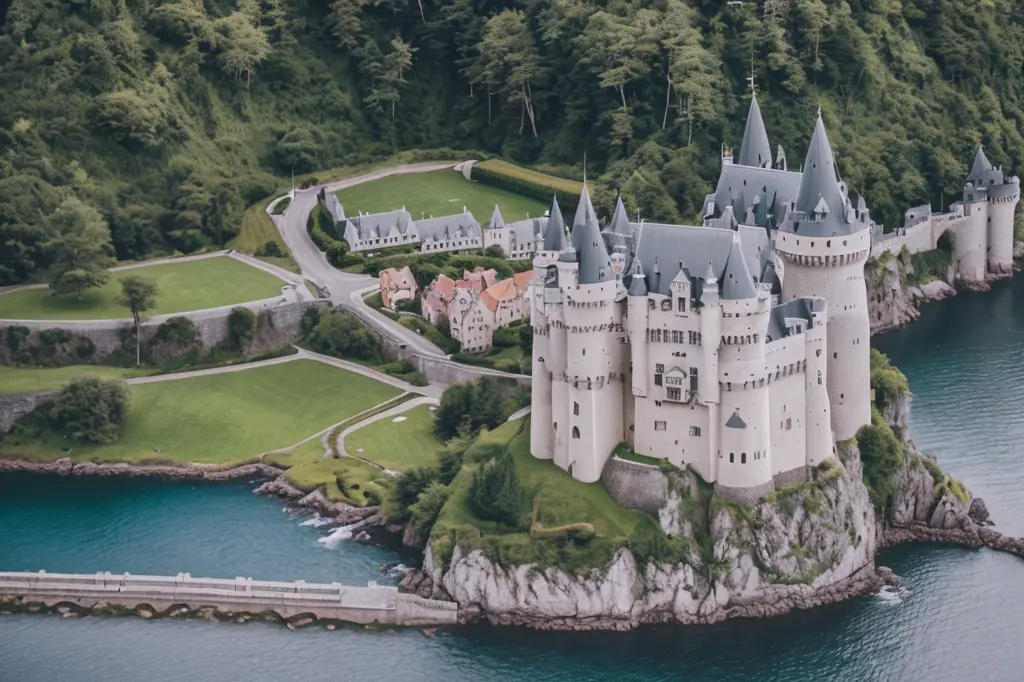
I ended up back where I’d begun, on Mount Giusto, high above the city. Most tourists climb to see the castle and the cathedral, but I came to see the mausoleum of Johann Joachim Winckelmann (1717-1768), the father of modern archaeology. Winckelmann wasn't from Trieste – he’d come here to catch a boat to Rome – but while here, he befriended a young man named Francesco Arcangeli, who murdered him for unknown reasons. Winckelmann was buried in the cathedral across the road. Arcangeli was executed in the city square below.
This eerie tale encapsulates what I love about Trieste. Everywhere you go in this elusive city, you're treading on layers of history – some recorded, much of it hidden. As I walked back to the harbor, past the Roman amphitheater, I recalled something Jan Morris wrote: “Here, more than anywhere, I remember lost times, lost chances, lost friends.” As the evening ferry carried me away, and Trieste shrank into the sea, her words resonated deeply.
Where to stay
I was a guest of Tivoli Portopiccolo Sistiana. Doubles from €300 per night, including breakfast. The room rate includes the use of the chic beach club. The house style is international rather than Italian. The entire resort is car-free (there’s a large underground garage). There are several restaurants on-site, in the hotel, and in the surrounding development. The best food I ate by far was in the beach club restaurant. It’s a good spot if you want seclusion, or if you’re traveling with children.
What to do in Trieste
1. Unity of Italy Square (Piazza Unità d’Italia)
This grand piazza—often hailed as Europe’s largest square opening directly onto the sea—was once the imperial heart of Trieste under Austro-Hungarian rule, known as Piazza Grande. In those days, it was the stage for civic ceremonies and Habsburg power, its Istrian-stone façades echoing the empire’s wealth and authority.
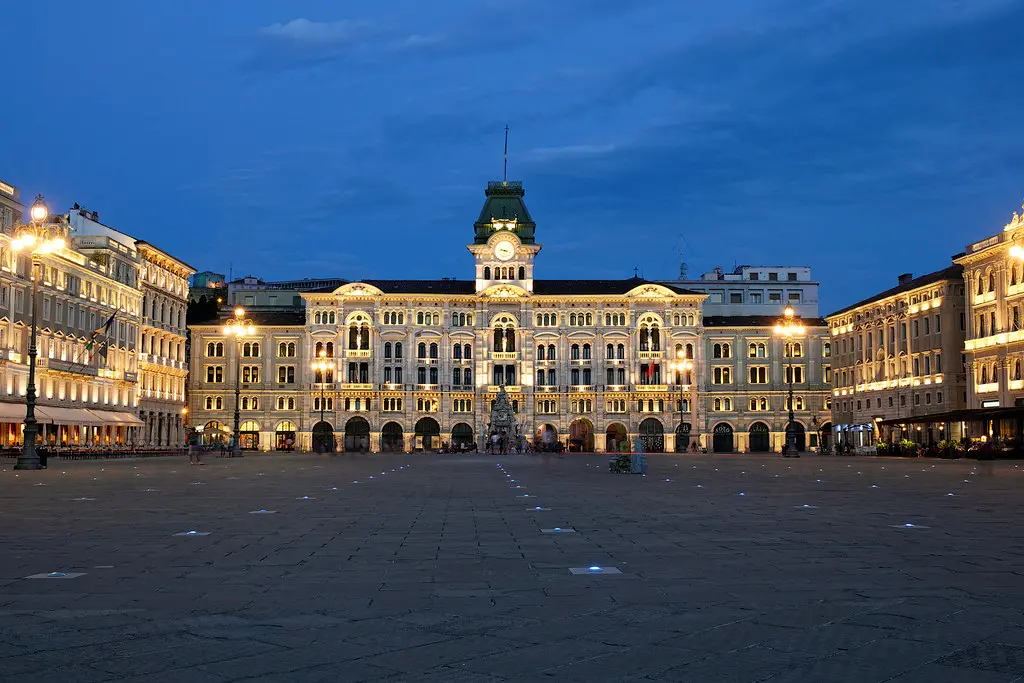
When Trieste was annexed to Italy in November 1918, the square was renamed to honor Italian unity, marking a dramatic shift from imperial capital to national pride. On July 2, 1914, the city received the somber return of Archduke Franz Ferdinand’s body at this very quay, moments before his assassination triggered the First World War. Today, Palazzo Modello, City Hall, and Lloyd Triestino stand as architectural witnesses to shifting tides of power and identity. Visitors come not just to admire the neoclassical façades shimmering at dusk, but to feel a place where empires ended, republics began, and history still breathes beside the Adriatic.
2. Miramare Castle
Perched on a limestone promontory along the Gulf of Trieste, Miramare Castle was built between 1856 and 1860 for Archduke Ferdinand Maximilian of Habsburg and his wife, Charlotte of Belgium. Commissioned after a storm forced the archduke to land at Grignano, the castle emerged as a romantic refuge by the sea—complete with an extravagant garden of exotic plants he personally selected. Inside, the rooms remain largely unchanged: the Archduke’s bedroom mimics a ship’s cabin, while the Throne Room and Oriental drawing rooms reveal Maximilian’s eclectic tastes through richly adorned interiors and paintings by Cesare dell’Acqua.
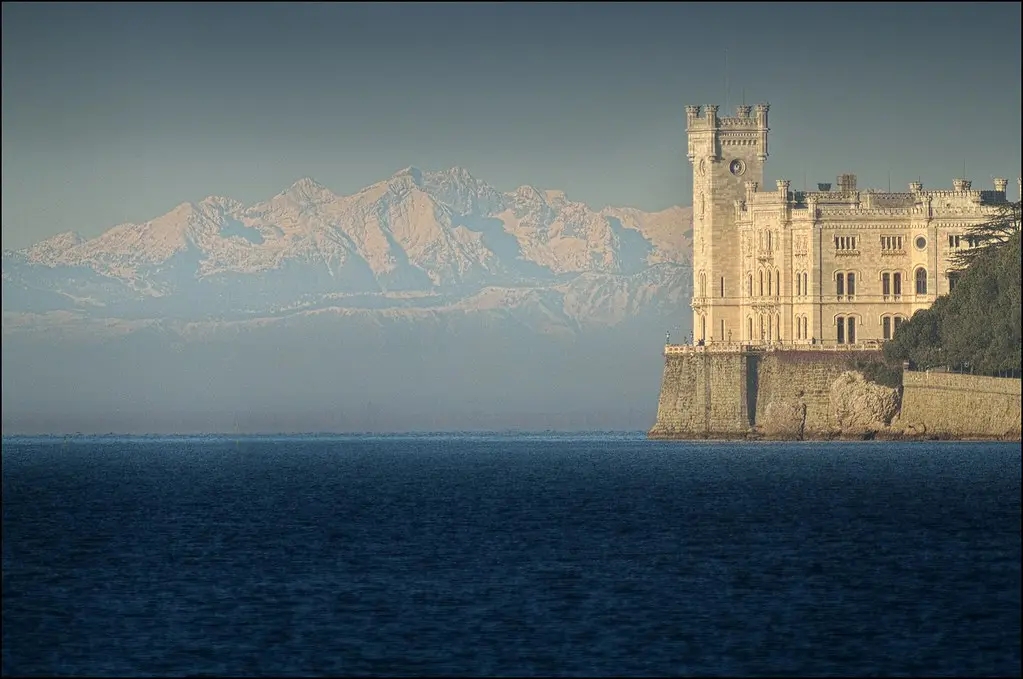
After Maximilian’s execution in Mexico in 1867, the palace changed hands—housing Austro-Hungarian, Italian, and Allied forces through two World Wars. Restored and opened as a museum in 1955, it remains one of the few European residences preserved with original furnishings intact. Visitors arrive to walk the same corridors once filled with poetry, politics, and tragedy, gazing out toward the Adriatic through windows unchanged since a doomed emperor first commissioned them.
3. Cattedrale di San Giusto Martire
Rising above Trieste on San Giusto Hill, this cathedral crowns a site sacred since Roman times. Archaeological layers reveal a temple likely dedicated to Jupiter beneath the present structure, which evolved through the early medieval basilicas and was unified in the 14th century into its current Romanesque‑Gothic form. This melding of two churches speaks to centuries of transformation—from pagan rites to Christian devotion—and reflects the city’s layered identity. Inside, striking frescoes, mosaics, and sculpted columns tell stories of faith, conquest, and community.
The cathedral was granted the status of basilica minor by Pope Leo XIII in 1899, affirming its spiritual and cultural importance. From its terrace, panoramic views stretch across Trieste: the rooftops, the sea, and even distant Slovenia. Pilgrims, history lovers, and solitude seekers alike climb San Giusto’s stairs to feel both grounded in centuries and elevated by perspective. In stone and glass, murals and marble, this cathedral carries the soul of a city shaped by empire and sanctified by time.
4. Revoltella Museum
The Revoltella Museum began in 1872 when Baron Pasquale Revoltella gifted his own palace—and the entire art collection, furnishings, and books within—to the city of Trieste upon his death. Constructed between 1853 and 1858 by architect Friedrich Hitzig, the elegant neo‑Renaissance palazzo on Piazza Venezia became both Revoltella’s home and the foundation of Trieste’s first modern art gallery. Over time, the collection expanded through sustained endowments and municipal acquisitions—today housing around 350 paintings and sculptures by artists such as Francesco Hayez, Lucio Fontana, Carlo Carrà, Felice Casorati, and Giorgio de Chirico.
In the early 20th century, the adjacent Palazzo Brunner was acquired and later redesigned by architect Carlo Scarpa beginning in the 1960s. Additional expansions followed through 1991 with new galleries in Palazzo Basevi and seamless transitions between modern and historic spaces. Today the museum’s layout guides visitors from Revoltella’s original apartment to expansive exhibition floors dedicated to Italian and international modern art. Baroque furnishings, period decor, and landmark works are interwoven with avant-garde sculpture, making each room feel both lived-in and forward-looking.
For visitors, the Revoltella Museum offers a rare opportunity to walk through Trieste’s imperial past and artistic evolution in one procession—where private legacy becomes public treasury, and the city’s shifting identity is mirrored in canvas and marble.
5. San Sabba Rice Mill National Monument & Museum
Originally built around 1898 as a rice-husking facility on Trieste’s outskirts, the Risiera di San Sabba took on a tragic new role after September 1943. Under Nazi control, it became the only concentration camp in Italy equipped with a crematorium—a grim processing point for political prisoners, partisans, Jews, Slovenians, Croatians, and others destined for deportation or execution. Between 1943 and 1945, it held thousands in detention cells and transit wings; estimates of lives lost reach up to 5,000 through violence, gassing, or execution on-site.
Declared a national monument in 1965, it was converted into a museum by 1975 following restoration, to preserve the cell blocks, crematorium remains, and documentation of atrocity. Exhibits now trace layers of memory—from forcible labor and stolen belongings to testimonies of survivors and archival recreations—a stark and essential reminder of wartime cruelty and civic justice.
Visitors today encounter silence in concrete corridors and empty execution cells, but also clarity: history preserved against erasure. The site is visited not for nostalgia but for remembrance—so that the stories of resistance, suffering, and survival endure through space, memory, and witness.
6. Castello di San Giusto
Crowning San Giusto Hill, the Castello di San Giusto reflects Trieste’s medieval and Habsburg legacy. The earliest structure—the imperial Captain’s House—was built around 1468 under Emperor Frederick III and expanded gradually into a triangular fortress by 1636, complete with three distinct bastions reflecting different military eras. Located at the height of the hill, the castle formed part of Trieste’s defensive fortifications once it fell under Austrian rule in 1382.

By the 18th century, the fortress served as a garrison and prison before its transformation into a museum in 1936. Today, it houses the Museum of History and Art, an armoury, and the Lapidarium with Roman inscriptions and local stone plaques. Iconic sculptures ‘Michez’ and ‘Jachez’—once part of the town hall clock—stand near the entrance. Walking the battlements, visitors gaze across red rooftops to the Adriatic, imagining the decisions made within those bastioned walls and the watch kept over the city for centuries.
The Castello di San Giusto symbolizes Trieste’s identity in microcosm: layered, resilient, and perched between land and sea. It’s a place where empire, defense, and culture converge above city and gulf alike.
7. Canal Grande (Trieste)
In the mid-18th century, Empress Maria Theresa commissioned Matteo Pirona to carve a navigable waterway directly into the heart of Trieste, transforming what had been salt marsh into the thriving Borgo Teresiano district. Completed around 1756, this Canal Grande allowed merchant ships to reach warehouses and cafes in the city center—anchoring Trieste as the Austro-Hungarian Empire’s premier seaport. Lined with elegant neoclassical palaces and historic churches—like the Palazzo Gopcevich and Sant’Antonio Nuovo—its banks tell stories of trade, empire, and architectural ambition.
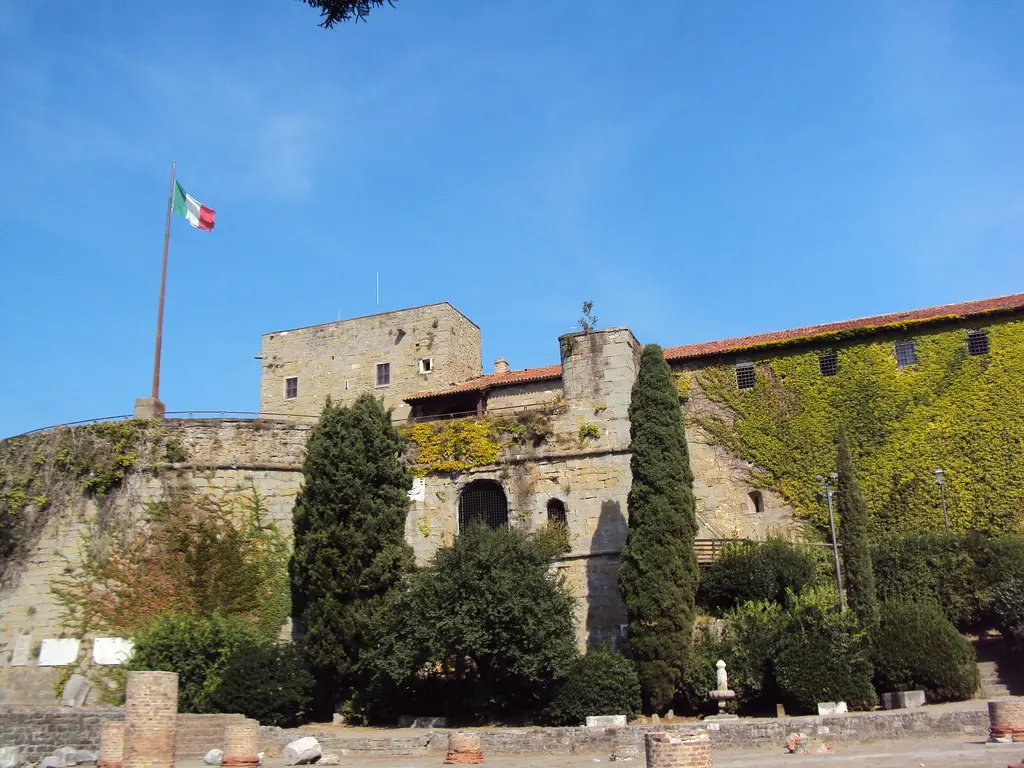
In 1934, part of the canal was filled in, ending near the Sant’Antonio church and creating Piazza Sant’Antonio in its place—a shift marking both physical and symbolic transformation. Today, visitors stroll across the iconic Red Bridge, pause at the statue of James Joyce, and step between historic cafes and waterfront airiness built from centuries of exchange. Canal Grande remains a vivid crossroads where daily life and imperial memory meet by the sea.
8. Victory Lighthouse (Faro della Vittoria)
Rising dramatically above the Gulf of Trieste, the Victory Lighthouse was built between 1923 and 1927 atop the ruins of the Austrian Fort Kressich. Conceived as both a beacon for ships and a monument to Italy’s post-World War I annexation of the city, the lighthouse was inaugurated in the presence of King Vittorio Emanuele III. At 68 meters tall—or about 223 feet—it was constructed intentionally taller than Berlin’s Victory Column, symbolically asserting Trieste’s new destiny within Italy.
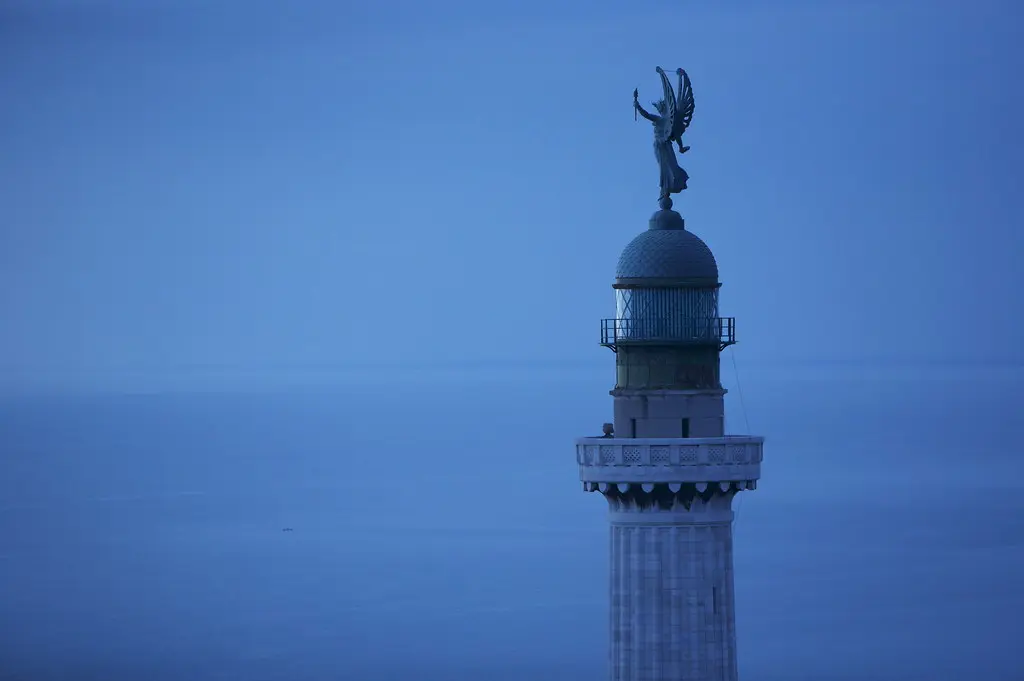
The base incorporates the anchor of the destroyer Audace, the first Italian warship to enter the port on November 3, 1918; above, a bronze statue of Winged Victory stands guard, and a sculpted seaman honors those lost at sea. After restoration, the lighthouse reopened to the public in 1986 and is now managed as both a navigational aid and cultural site. Visitors ascend its slopes to gaze over the Adriatic and reflect on a bold chapter of regional transition.
9. Roman Theatre of Trieste
At the foot of San Giusto Hill lie the stone remnants of a Roman amphitheater, built in the late 1st century BC and expanded under Emperor Trajan in the early 2nd century CE. Capable of seating 3,500 to 6,000 spectators, the theater once echoed with civic gatherings, musical performances, and spectacles—its orchestra and carved proscenium oriented toward gentle sea views. Buried beneath centuries of urban development, its remains were rediscovered in 1814 and fully excavated in 1938 amid city renovations. Today, the stone tiers and crumbling walls stand as silent testimony to Trieste’s Roman roots and urban endurance. In summer, the space occasionally hosts open-air events that trace the continuum from ancient stagecraft to modern storytelling. Walking through the Roman Theatre is to walk through layers of Tergeste—a city shaped by empire, trade, and the tides of history.
10. Kleines Berlin (WWII Air‑Raid Tunnels)
Beneath Trieste’s streets lies a secret chapter of World War II history: the underground network known today as Kleines Berlin. Named wryly by locals during the German occupation (though in German the proper phrase would be Kleines Berlin), these tunnels were dug by Italian authorities and the Organisation Todt after 1943 to shelter civilians and SS officers amidst Allied air raids. The Italian sector served families and townspeople with benches, a sick bay, and basic amenities, while the German sector housed offices, supply rooms, and a private passage used by Nazi SS leader Odilo Globocnik to move between his villa and the courthouse. Forgotten after the war, the tunnels were rediscovered in the 1990s and preserved by local historians, now open by guided tour to let visitors move beneath wartime history in dim-lit passageways paused in time. Beyond eerie corridors, Kleines Berlin reveals Trieste’s occupied past and the resilience implicit in its restoration.


